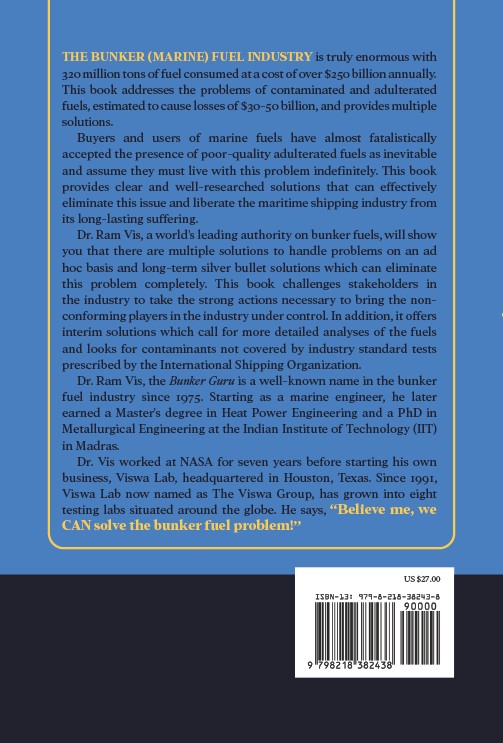The International Group of P&I Clubs (IGP&I) has released a circular providing guidelines for the safe handling and transportation of Direct Reduced Iron (DRI), reports Safety4sea.
Direct Reduced Iron
Direct reduced iron (DRI) is created by passing hot reducing gases over iron ore, resulting in a porous iron material with a large surface area susceptible to re-oxidation. The main dangers associated with DRI are its ability to self-heat through oxidation and to produce hydrogen when reacting with water or moisture.
In enclosed cargo holds, the hydrogen produced from this reaction can create an explosive atmosphere, posing a significant explosion risk.
DRI comes in two primary forms: Type A (hot-molded briquettes) and Type B (pellets). Fines, small particles generated during manufacturing and handling, are typically separated from these types.
Previously, fines were shipped as DRI Type C, but the International Maritime Solid Bulk Cargoes (IMSBC) Code now requires a maximum moisture content of 0.3% for this type. This low moisture level is often impractical due to handling practices, such as outdoor storage, which exposes fines to rain.
The IMSBC Code also mandates that DRI (C) cargoes be shipped under inert gas, similar to DRI (B), to prevent self-heating. However, the primary risk with fines is hydrogen production from water reactions, requiring ventilation to maintain safe hydrogen levels.
Achieving a 0.3% moisture content for DRI(C) fines is challenging, leading shippers to seek exemptions under section 1.5 of the IMSBC Code. These exemptions often aimed to substitute inert gas with mechanical ventilation, but this required a tripartite agreement. Consequently, the industry needed to collaborate on a more sustainable and safe solution.
Hazards Associated
The International Maritime Solid Bulk Cargoes (IMSBC) Code’s entry for Direct Reduced Iron (DRI) Type D highlights the potential for temperature increases during bulk handling, along with the risks of overheating, fire, and explosion due to the cargo’s reactivity with air and water, which produces hydrogen gas and heat.
While DRI (D) reacts with oxygen and generates heat, its dense packing and minimal spaces between particles limit oxygen/fresh air diffusion compared to other DRI types, like briquettes or pellets. This low permeability makes self-heating a secondary concern. The primary risk is hydrogen generation from the reaction between DRI and water/moisture. Therefore, the DRI (D) schedule emphasizes measuring and controlling hydrogen gas concentrations in the ullage spaces.
Despite self-heating being a secondary hazard, the reaction with air can deplete oxygen in cargo spaces and potentially adjacent areas where hydrogen might accumulate. Consequently, the IMSBC Code mandates that entry into loaded cargo spaces or adjacent enclosed areas is prohibited until they have been thoroughly ventilated and confirmed to be gas-free.
The Code references the “Revised recommendations for entering enclosed spaces aboard ships” (Resolution A.1050(27)) for guidance on safe entry procedures.
Preparation Of Cargo
Hold Preparation:
- Cargo spaces must be clean, dry, and free of salt and residues from previous cargo.
- All combustible materials, such as wooden battens, loose dunnage, and debris, must be removed.
- The emphasis on salt removal is due to DRI’s increased reactivity with seawater compared to freshwater.
Cargo Ageing:
- Outdoor stockpiles are allowed, but they must be arranged to facilitate natural “ageing” through atmospheric exposure.
- This “ageing” process reduces the cargo’s reactivity by allowing the most active surface sites to react with oxygen.
- The cargo must be aged for at least 30 days before loading.
- The shipper must provide the ship’s master with a certificate from a qualified person, recognized by the port authority, confirming proper ageing.
- The shipper must also provide certification that the cargo does not meet the criteria for class 4.2 materials, meaning it is not prone to self-heating.
Moisture Control:
- While outdoor storage is permitted, the cargo’s moisture content must remain below its Transportable Moisture Limit (TML) during loading to prevent liquefaction.
- Loading should not occur during rain, and non-working hatches must be kept closed.
- Discharging in rain is allowed if the entire cargo in a hold is unloaded at that port.
- The TML for DRI fines is typically between 9-12%.
- Once unloaded ashore, the risks of hydrogen production and liquefaction are no longer a concern.
Temperature Management:
- DRI with temperatures exceeding 65°C should not be loaded.
- Temperature measurements must be taken at the stockpile for three consecutive days before loading, at a depth of 20-30 cm and at 3-meter intervals.
- Temperatures must also be recorded during loading, with a log provided to the ship’s master.
- After loading, thermocouples are placed in the cargo to allow remote temperature monitoring without entering the holds.
General Precautions
The primary danger when transporting DRI (D) is the production of hydrogen, a flammable gas, within the space (ullage) of the cargo hold. Unlike other DRI types, DRI (D) requires a risk assessment before the voyage. This assessment must consider “comprehensive information on the risk of hydrogen generation and the factors which might affect the rate thereof,” provided by the shipper.
This risk assessment may also include factors like expected weather conditions, ship speed and distance to the discharge port, the availability of safe harbors along the route, and any existing data on hydrogen production. The ship’s master, with the shipper’s assistance, must ensure the crew is fully informed about the risks before loading begins.
The ship must have equipment to measure hydrogen and oxygen levels. This is done using a gas detector with a pump and hose that can be inserted into the cargo hold’s gas sampling points.
In practice, and as recommended by the IMSBC Code, a skilled cargo technician, appointed by the shipper, should measure hold gases and cargo temperatures. The Code advises that this technician be present during loading and throughout the voyage.
Did you subscribe to our daily Newsletter?
It’s Free Click here to Subscribe!
Source: Safety4sea
















![[Watch] How Oil Rigs are Transported by Semi-submersible Vessel](https://mfame.guru/wp-content/uploads/2023/11/mfame-tanker-100x70.jpg)
